Gluteus Minimus Muscle
Anatomy of Gluteus Minimus Muscle
The gluteus minimus is a small triangular muscle located deep in the posterior region of the hip, spanning from the gluteal surface of the ilium to the proximal end of the femur. It belongs to the group of gluteal muscles, along with the gluteus maximus, gluteus medius, and tensor fasciae latae.
Gluteus minimus acts in synergy with the gluteus medius to produce the movements on the hip joint; the internal rotation and abduction of the thigh. Moreover, this muscle is an important stabilizer of the pelvis in the gait cycle.
ORIGIN AND INSERTION:
Between the anterior and inferior gluteal lines, on the gluteal surface of the ilium, is where the gluteus minimus muscle originates to develop. Converging on a narrow tendon that runs anteroinferiorly toward the femur are the muscle fibers.
The gluteus minimus tendon crosses the superior side of the greater trochanter of the femur after it is divided by the gluteus minimus trochanteric bursa. Ultimately, the tendon attaches itself to the greater trochanter’s anterolateral aspect. A little percentage of the muscle fibers may occasionally mix in with the quadriceps femoris muscle’s vastus lateralis, piriformis, or superior gemellus muscles.
INNERVATION:
The gluteus minimus is innervated by the superior gluteal nerve. It is a lumbosacral plexus branch where the L4, L5, and S1 nerve roots originate. The nerve parallels the deep branch of the superior gluteal artery as it passes between the gluteus minimus and medius.
After that, it divides into an inferior branch and a superior branch. The gluteus minimus is supplied by the inferior branch. When this nerve is injured, the hip abduction becomes weak, and the gait may become Trendelenburg-like.
BLOOD SUPPLY:
The superior gluteal artery, which emerges from the posterior segment of the internal iliac artery, supplies blood to the gluteus minimus. The superior gluteal artery divides into the superficial and deep branches when it exits the pelvis through the greater sciatic foramen above the piriformis. It then travels posteriorly between the S1 nerve and the lumbosacral trunk. The gluteus minimus is supplied by the deep branch of the superior gluteal artery. After traveling to the furthest point of the superior gluteal artery, it anastomoses with the medial circumflex femoral arteries.
ACTION:
Its main action is hip abduction. It stabilizes the pelvis during single limb support in the gait, as it is activated on the supported side, to keep the pelvis from dropping on the opposite swing side. Its anterior segment medially rotates the thigh.
- Anterior: flexes and internally rotates the femur at the hip joint.
- Posterior: extends and externally rotates the femur at the hip joint.
- Together: abduction of the hip joint or stabilizes the pelvis relative to the femur (used in walking).
The gluteus minimus has an interesting set of actions. It is not so different from last month’s muscle of the month, the deltoid muscle. In fact, I often refer to the gluteals as the deltoids of the hip joint. The movement of the gluteus minimus is interesting because the anterior portion functions in opposition to the posterior portion. For instance, if I raise my leg in front of me (flexion of the hip joint), the anterior part of the gluteus minimus contracts to help lift my leg up. The posterior part of the gluteus minimus is lengthening while my hip joint is flexing.
Muscle Relations
Of the three gluteal muscles, the gluteus minimus is the deepest and smallest. While the gluteus medius muscle covers it superficially, its deep surface is totally connected to the ilium. Between these two muscles go the branches of the superior gluteal artery and nerve.
Tensor fasciae latae are connected to the muscle’s anterior margin, whilst the piriformis muscle is connected to the muscle’s posterior margin. The reflected tendon of the rectus femoris and the hip capsule is situated superficially to the gluteus minimus tendon at the insertion level.
Embryology
The myoblasts that surround the growing bone give rise to the gluteus minimus, just as other limb muscles. The surrounding tissues produce chemical cues that cause somites to differentiate into myoblasts, which is how the myoblasts form. After that, myoblasts combine to create myotubes, which are distinguished by their long, tubular, multinucleated nature. Myotubes grow into layers that will eventually divide the muscle from surrounding connective tissue.
In comparison to the upper limb buds, the lower limb buds begin to form at the end of the fourth week, albeit a little later. Furthermore, when the upper limb rotates laterally, the lower limb will rotate medially.
Anatomical Variations
The anterior and posterior segments are the two divisions of the gluteus minimus in certain individuals. Muscle fibers may also be sent to the piriformis and/or superior gemellus.
Gluteus Minimus muscle exercise:
The gluteus medius is composed of 2 distinct segments (anterior and posterior) with 2 different roles, the anterior segment reduces the stresses on the hip antero-superior structures and the posterior segment stabilizes the head of the femur. Atrophy in the anterior segment is associated with an increased risk of falls, aging, and total hip replacement.
- Exercises that strengthen anterior segment: resisted hip abduction-extension exercise.
- Exercises that strengthen the Posterior segment: single leg bridge, side lie abduction, the resisted hip abduction-extension exercise, and single leg squat.
- Exercises that produced low activity in both segments: side lie clam.
- Low activity was generated in the anterior segment in the single-leg bridge.
Gluteus Minimus muscle Stretching exercise:
Supine Hip Twist Stretch:
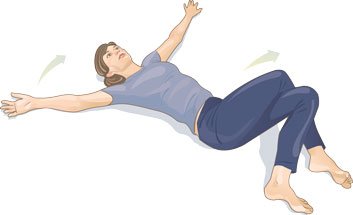
This exercise stretches the outer hip, where the gluteus minimus is located, without placing stress on your spine. Lie on the floor on your back with your arms out to your sides and with your hands on the floor. Put your feet flat on the floor about hip-width apart. Cross your left foot over your right thigh near your knee. Exhale and turn your pelvis toward your right so that your outer right knee and your left foot move toward the floor. Do not lift your left shoulder off the floor or twist your upper back. Hold this stretch for five to six deep breaths. Perform two sets of stretches on each side of your body.
Wall Glute Stretch:

This exercise stretches your entire hip region, which also takes pressure off the sciatic nerves, which run through either side of your buttocks. Lie on the floor on your back, and put your feet on the wall about hip-width apart. Cross your left foot on your right thigh near your knee. Do not move your pelvis as you cross your foot. Push your left knee toward the wall by using your hip. Hold this stretch for five to six deep breaths. Switch the leg position, and repeat the stretch on the opposite hip.
Supine Leg Extension Stretch:

This exercise stretches the entire back of your hip and leg from your buttocks and into your calves. Lie on the floor on your back, and lift your left knee to your ribs. Grab the back of your knee, and point your knee so that it faces toward your right shoulder or the right side of your chin. Slowly extend your leg straight up, and flex your left foot toward your right shoulder. Hold the stretch for five to six deep breaths. Repeat the stretch on the opposite leg.
Self-Myofascial Release:

This is a self-massage technique that breaks apart muscle and tissue adhesions that cause sensitivity, pain and stiffness. Use a foam roller to massage your gluteal complex near your outer hip and the head of the femur. Put the foam roller on the floor, and sit on top of it with both feet flat on the floor. Cross your left foot over your right thigh, and put your left hand behind you near the roller. Your weight should shift toward your left hip.
Three glute exercises to add to your workout:
- Hip thrust
Also called “bridges,” this exercise is pretty self-explanatory.
Lying flat on the ground with your arms at your sides, knees bent, and feet tucked in, force your heels against the ground while moving your hips upward.
Go slow and tighten your core and glute muscles the entire time.
If you’ve never done a hip thrust before, start by using only your bodyweight. Once you get the hang of it, you can add weight by carefully laying a medicine ball, kettlebell, or barbell across your pelvic area. The extra resistance will help your glutes get stronger.
2. Lateral banded walks
Begin by placing a resistance band around your legs, just above the knees. If you want to increase the difficulty, place the band below your knees, above your ankles.
To do the move, push your butt backward and bend your knees as if you were squatting.
Keep your back straight and engage your core while you move your right foot 8-10 inches to the right, then bring your left foot in toward it.
Then, repeat with the opposite leg.
The key is to drive your legs with your hips.
The gluteus medius and minimus are most important in moves that require abduction, or movement away from the middle of the body. With lateral banded walks, you target the glutes as well as the hip muscles.
As you get better, you can increase the difficulty by using a thicker band with more resistance, or moving the band farther down toward your ankles.
3. Curtsy lunge
Not only will the curtsy lunge recruit the smaller gluteus medius and minimus muscles, it’s also highly customizable depending on your level.
Begin by standing with your feet roughly shoulder-width apart.
With a straight back and tight core, bring your left leg behind and to the outside of your right foot.
Drop your hips through your glutes until your right leg is nearly parallel with the floor, then return to the starting position.
Repeat 4 reps and then switch legs.
In addition to your glutes, the curtsy lunge also recruits your quadriceps, calves, and hip adductors.
To make the movement more difficult, hold a kettlebell or dumbbell.
Gluteus Minimus Strengthening Exercise:
Side-lying Hip Abduction:
Lie on one side with the bottom leg bent to 45 degrees and the top leg straight. Stack the hips and shoulders directly on top of one another. There is a strong tendency to roll the hips forward or back here. Setting up a wall directly behind the client can be a helpful positioning cue. Engage the gluteus medius to lift the upper leg toward the ceiling; squeeze and hold the top position and then slowly lower the leg. This is not a big movement and is easily overdone, which shifts the work away from the gluteus medius to other surrounding musculature. Avoid any crunching with the trunk and lift the leg just high enough to feel the gluteus medius engage. For an additional challenge, add an isometric hold at the top.
Clamshell:
The setup here is similar to the first exercise, but the upper and lower legs are both bent (imagine being in a sit-up position and rolling over to one side). Activate the gluteus medius to lift the top leg open, as if opening a clamshell. Add a Versa Loop band for a greater challenge.
Isometric Single-leg Wall Lean:
Standing parallel to a wall, flex the hip closest to the wall to 90 degrees, with the knee bent. Press the foot of the stance leg into the floor while driving the bent leg into the wall. The gluteus medius of the standing leg will fire to stabilize the pelvis.
Isometric Single-leg Wall Lean:
Standing parallel to a wall, flex the hip closest to the wall to 90 degrees, with the knee bent. Press the foot of the stance leg into the floor while driving the bent leg into the wall. The gluteus medius of the standing leg will fire to stabilize the pelvis.
monster-walks
Isometric Single-leg Wall Lean: Standing parallel to a wall, flex the hip closest to the wall to 90 degrees, with the knee bent. Press the foot of the stance leg into the floor while driving the bent leg into the wall. The gluteus medius of the standing leg will fire to stabilize the pelvis.
Lateral Band Walks: Place a Versa Loop band around the ankles, shins or directly above or below the knees and assume a quarter-squat position. Maintain the squat position while stepping laterally, keeping tension on the band throughout.
Banded Triplanar Toe Taps: Place a Versa Loop band directly above the knees and shift into a single-leg, quarter-squat position. While balancing on the standing leg, tap the alternate leg forward, to the side, and directly behind. The core and hip muscles will fire to maintain single-leg balance against the band’s resistance in three different directions. This exercise works the gluteus medius of both the moving leg and the stabilizing leg, as they fire to maintain single-leg balance against the band’s resistance in three different directions.
Clinical Importance
Trendelenburg gait
Trendelenburg gait, also known as gluteal gait, can be caused by damage to the gluteus minimus or the superior gluteal nerve. When asked to stand on one leg, a positive Trendelenburg sign shows pelvic drooping on an unsupported side; this suggests that the abductor muscles on the ipsilateral (supported) side are weak or non-functional.
In order to compensate for the lower extremities appearing longer due to the pelvis sagging on the unsupported side, the gait manifests as a person leaning towards the supported side during the swing phase of the stride. Because of the placement of the gluteus minimus distal attachments, fractures to the greater trochanter may cause a Trendelenburg gait.
Greater trochanteric pain syndrome (GTPS)
Greater trochanteric pain syndrome (GTPS) is a condition caused by tendinopathy of the gluteus minimus. The hallmark of GTPS is lateral hip pain. It is frequently mistaken for trochanteric bursitis, a deceptive name because of the bursae’s direct involvement and rarity of incidence. The symptoms of greater trochanteric pain syndrome are comparable to those of rotator cuff tendinopathy, a condition that affects the trochanteric enthesis. A physical examination will detect a Trendelenburg gait and pain to palpation of the greater trochanter.
To distinguish between hip osteoarthritis and suspected GTPS, patients should undergo a standing anteroposterior radiograph of the pelvis. Furthermore, a hip ultrasound can assist in locating the problematic muscle lesion. Supportive measures (such as nonsteroidal anti-inflammatory medications and/or glucocorticoid injections) and activity reduction aimed at reducing the gluteus minimus tendon’s stress are used to treat GTPS. In order to rule out a partial or total rupture, patients who have experienced ongoing pain for two to three months should have magnetic resonance imaging of the hip. Following this, they should be referred to an orthopedist for a surgical examination.
Gluteus Minimus Trigger points
Trigger points have the ability to impact the gluteus minimus. The most typical sign of a gluteus minimus trigger point is referred pain that travels from the end of the lumbar spine to the ankle; this pain is comparable to sciatica pain but does not include numbness or weakening.
A Gluteal strain Muscle strain:
A gluteal strain is a tear in one of the gluteal muscles.
The gluteal muscles are the muscles that make up the buttocks. Each buttock is made up of three different gluteal muscles; gluteus maximums, gluteus medius, and gluteus minimus. A gluteal strain is when there is a tear in one or more of these muscles.
Physiotherapy treatment for a gluteal strain:
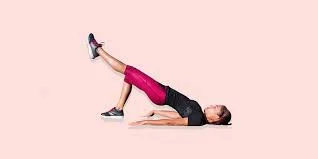
After the initial resting and use of ice, it is important to rehabilitate the damaged muscle. Physiotherapy is vital to achieve this. If the muscle damage is very severe it may be necessary for crutches to be used for a short period of time to reduce strain on the muscle and accelerate the healing process.
Early rehabilitation of the muscle will involve performing movements that involve the muscle, before moving on to some resisted movements. Later rehabilitation will involve starting activities that use the muscle such as jogging and climbing stairs, before progressing on to running and jumping.
The specific treatment that can be used alongside the rehabilitation may include:
- Electrotherapy eg. IFT, TENS, Ultrasound Therapy
- Massage
- Stretching exercises
- Mobilisation exercises
- Education on activity and technique
Surgical Importance
In one to two percent of total hip arthroplasty (THA) instances, nerve damage may occur. A Trendelenburg gait and weakness with hip abduction might arise from damage to the superior gluteal nerve. If the harm is caused by direct nerve laceration or compression of a big hematoma, surgical exploration is necessary.
Heterotopic ossification (HO) of the gluteus minimus is another possible adverse effect that surgeons should take into account after total hip arthroplasty (THA). Ectopic bone formation in extraskeletal tissues is a feature of heterotopic ossification. After surgery, hip pain and stiffness are commonly experienced by patients several months later. If there is a significant loss of range of motion, surgical resection is the advised course of action.
FAQs
What is the origin and insertion of the gluteus minimus?
The gluteus minimus originates from the gluteal surface of the ilium, between the anterior and inferior gluteal lines. It also originates from the margin of the greater sciatic notch. The gluteus minimus inserts onto the anterolateral aspect of the greater trochanter of the femur.
What exercises work the gluteus minimus?
Following are the Best exercises for Gluteus Minimus
Curtsy Lunges.
Fire Hydrants.
Glute Bridges.
Clamshells.
Lateral Walks.
Side-Lying Hip Abduction.
Single-Leg Squats.
Side Plank Hip Dips.
What is gluteal minimus?
The gluteus minimus is the smallest of the three gluteal muscles, located deep to the gluteus medius and the tensor fasciae latae muscles. It is a fan-shaped muscle that originates from the gluteal surface of the ilium and inserts onto the anterolateral aspect of the greater trochanter of the femur.
What is the action of the gluteus minimus and medius?
The internal rotation of the hip joint and thigh abduction are motions that are produced by the gluteus minimus and gluteus medius working together. Additionally, during the gait cycle, this muscle plays a crucial stabilizing role for the pelvis.
What happens when gluteus minimus is weak?
You are more likely to sustain injuries to the hips, knees, and ankles if your gluteus minimus muscles are weak. It may even lead to severe back pain. Of course, weak glutes result in unstable hips, which affects balance.
How do you find gluteus minimus?
The Gluteus Minimus, as its name suggests, is a tiny muscle that is located above the buttocks. It protrudes from the side of the hip girdle and enters the femur close to the hip joint.
What is the difference between gluteus medius and minimus?
Along the lateral side of our pelvis, the gluteus medius and gluteus minimus muscles really cross over one another. The smaller of the two muscles, the gluteus minimus, is positioned beneath the larger gluteus medius, which is positioned on top of it.


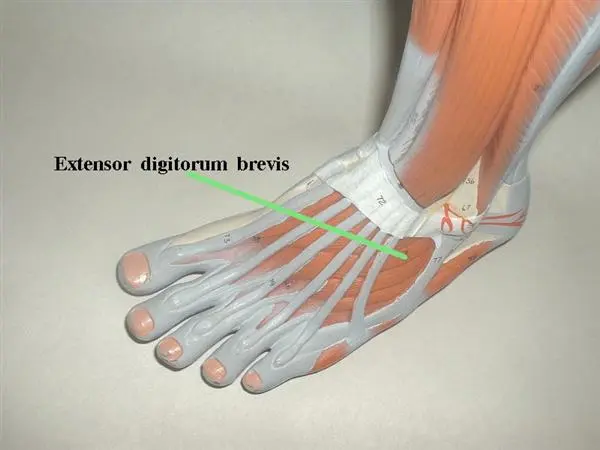
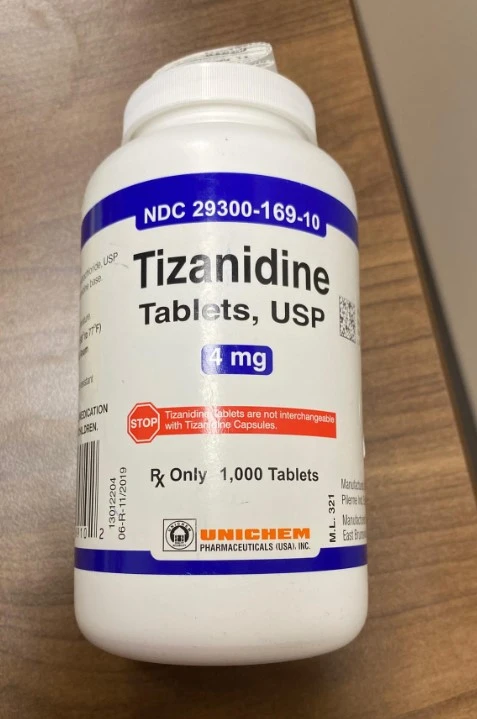
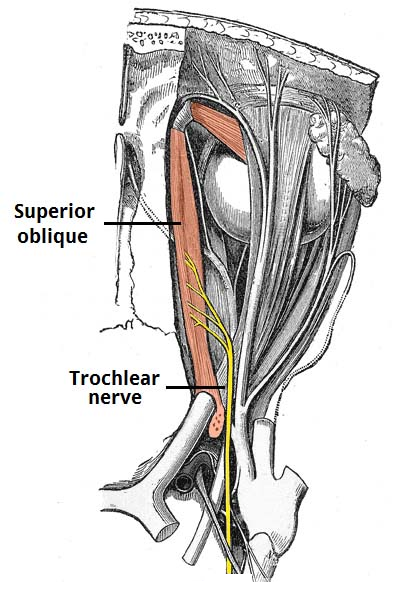

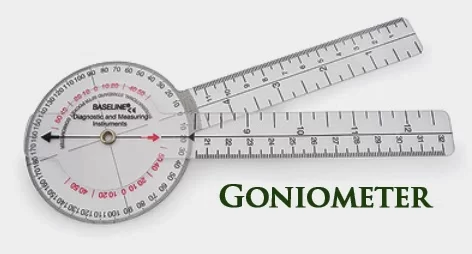
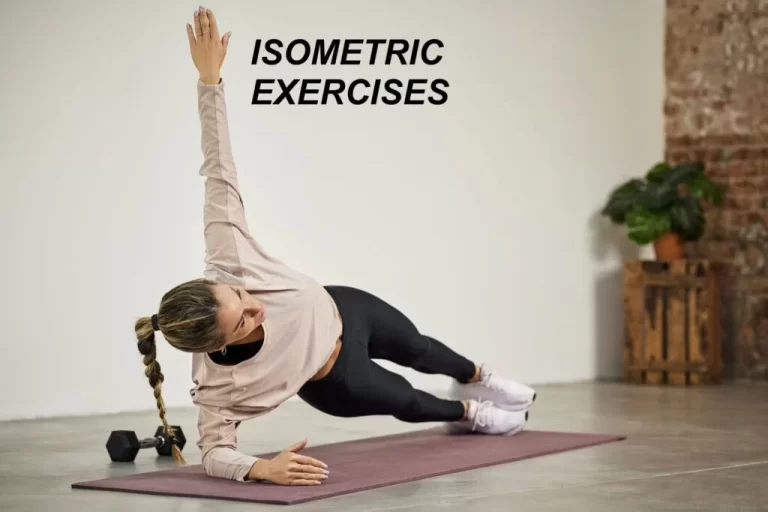
3 Comments